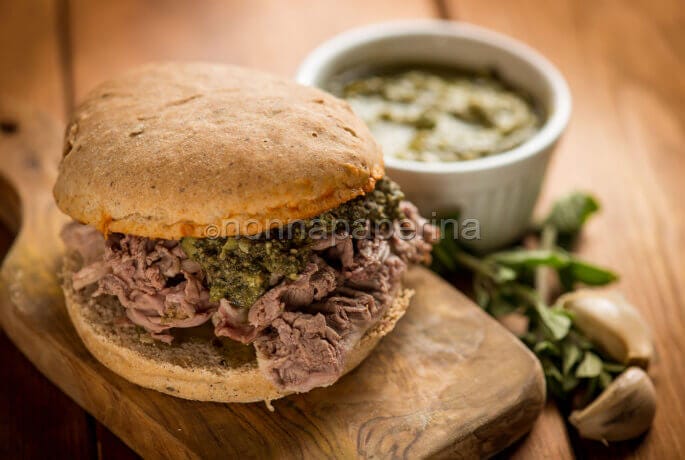Grandma Ducky » Blog
Blog

Unfortunately, with each passing day, food intolerances are increasingly widespread, especially in countries with greater industrial development and, according to our medical staff, the reasons for this increase can be traced back to external polluting factors and changes in lifestyle habits.
Food intolerances are much more common than food allergies and the most common ones at present are lactose and gluten intolerances, followed closely by nickel. Whatever intolerance we encounter, our lifestyle changes almost radically.
You have to start looking at the ingredients that make up a certain food, you have to try to understand what you can and cannot eat, how you have to cook it, etc.
And as long as you are within the walls of your home it is easier, the problem presents itself clearly when you have to decide whether to go to a restaurant or not for some occasion. As soon as the intolerance is diagnosed, believe me, you must find out exactly what you have on your plate before tasting it. Those who don’t suffer from it cannot understand the discomfort and are terrified of risking getting sick if they eat the wrong thing.
There are still many doubts about food intolerances and inflammation.
For some time now, thanks to advances in science and the analysis of related tests with unconventional results, food intolerances have been the cause of enormous doubts and the question is whether, on a clinical and scientific level, they really exist.
In fact, it is known that some people have problems digesting a certain food because the body has stopped tolerating it.
However, since they are mostly temporary problems, many doctors tend not to consider them an actual clinical condition that requires treatments or the elimination of certain foods.
Furthermore, after some research, it was found that food-related inflammation exists, which has increased the doubts and perplexity of many experts in the sector. Let’s find out what exactly it is.
Food intolerances and inflammation: here are the differences
While intolerances manifest themselves with digestive problems and other symptoms due to the fact that the body has temporarily reduced tolerance towards certain foods or substances contained in them, food inflammation occurs as an expression of the of adaptation of the organism, in relation to the antigenic diversity of some certain foods essential for our well-being.
Therefore, in comparison, food intolerances are much less invasive, do not involve the immunological reaction to foods and are only related to a “non-tolerance” which, most of the time, does not last forever. In this regard, experts are carrying out a series of research that will bring to light further clarifications, as well as new and more accurate tests valid for diagnosing inflammation. In any case, today we no longer talk so often about intolleranze, but but rather inflammation due to certain foods.
Furthermore, it is increasingly known that many doctors define tests for food intolerances as real own scams and, apparently, scientific developments tend to confirm this several times. However, with further evidence from ongoing research, we will soon be able to draw much more precise conclusions.
Other elements not to be underestimated
Although unfortunately many medical doctors still do not believe it, it is useful to know that arthritis, joint pain, cough, respiratory problems, gastroesophageal reflux, inflammatory colon diseases, colitis and insulin resistance are just some of the conditions that can be related to nutrition.
Therefore, this means that these symptoms can very well be caused by what we know as food intolerances, but also allergies and inflammation.
However, many doctors do not take into consideration this information obtained from recent and numerous scientific research and treat their patients exclusively and directly with medicines.
Fortunately, some have gone a step further, but prescribe some tests to identify the presence of allergies and food intolerances, which unfortunately continue to not take into account the progress made in recent years.
Therefore, they still end up obtaining results that do not have enough value and cannot help make a correct diagnosis.
Therefore, before undergoing ineffective treatments or tests, every patient must know that each of us is allergic or intolerant to something.
Therefore, the advice is to pay attention to your symptoms, do not overconsume foods that make the body react badly and constantly strengthen the immune system.
A tip: if you think you have problems due to your diet, take a pen and paper and keep a food diary.
Write and update the diary carefully every time you ingest something, starting from breakfast up to midnight spaghetti with friends.
Of course, also write down your observations and the discomfort you feel. It may seem useless to you but believe it is not so. It will help the doctor a lot in the diagnosis
Never do self-diagnosis
Not to mention celiacs who not only have to pay attention to the foods they eat, but also to possible contamination. This pathology requires gluten-free foods and drinks, but also a series of precautions in the kitchen to avoid contaminating food. The first thing a chef needs to know concerns the work surface and tools.
Pots, pans, plates, crockery and everything used to cook gluten-free foods must always be used only for gluten-free foods and kept completely separate from those you normally use.
The tools, the work surface and the hands must absolutely be thoroughly cleaned before cooking gluten-free foods to make sure that no previous traces of flour remain. And kept separate after washing them.
The chef must ensure that every single ingredient is among those permitted, consult the labels and can keep the handbook handy and if he is not familiar it is best to recommend naturally gluten-free foods such as milk, meat, fish, eggs, fruit, vegetables, potatoes, cheeses, yogurt, legumes and cereals that do not contain gluten (rice, millet, corn, buckwheat)
They are often difficult to locate
Tests to be carried out to discover intolerances. There are more and more people affected by problems linked to the intake of certain foods, but it is not easy to identify with certainty the food intolerances from which one is affected.
Let’s certainly start with the best known: celiac disease, a real autoimmune disease that leads to permanent gluten intolerance. The diagnostic tests to trace it are rather simple and give certain results. We start with the blood tests to identify the presence of anti-transglutaminase antibodies (tTG), anti-gliadin antibodies (AGA) and anti-endomysial antibodies (EMA), as well as the presence of genetic predisposition given by the identification of the HLA DQ2 and DQ8 genes. If positive, you will then need to proceed with a biopsy of the duodenal mucosa during duodenoscopy. For pediatric patients there is no longer the obligation to carry out this last test if the blood values are ten times above the permitted limit and there are symptoms and clinical signs directly attributable to celiac disease.
Even when we talk about lactose intolerance it is easily diagnosable through the Breath Test which we have already talked about extensively previously.
How to identify all other food intolerances?
If for the diagnosis of celiac disease and lactose intolerance the diagnostic process is almost unambiguous and simple, for many other food problems it could be much more complex.
Unfortunately, to date, to identify sensitivity to gluten, nickel, eggs, yeasts and many others, there are no univocal tests, but rather a series of different tests can be found used according to the different testing structures reference. In fact, there are more and more clinics specialized in the treatment of food intolerances and their identification which have developed specific systems to discover the existence or otherwise of the aforementioned problems.
On the contrary, however, in case you are faced with real allergies, here you can refer to skin tests (prick tests) or specific laboratory tests (rast tests and CAP-system ) supported by specialized allergist doctors.
Intolerances are increasingly widespread
The dishes must be cooked completely separately, the same water should not be used, the same oil should not be used, they should not be mixed with the same kitchen tools and the same machine that is used to prepare the coffee should not be used to prepare the coffee. of barley.
Avoid cutlery, cutting boards, wooden tools and non-stick pans which tend to absorb food. But do you believe that there are some considerations to be respected in a kitchen only for those with gluten problems??? Even those who have nickel intolerance problems, in addition to the foods that are not permitted, there are also a whole series of precautions that must be respected.
Nickel is a metal present in most objects we use every day. To deal with the dilemma regarding the use of kitchen tools that do not have them, we must therefore choose between some materials that allow us to range over the various cooking methods.
Among those highly discouraged there is certainly stainless steel: an alloy of iron, nickel, chromium and carbon. It is better, in this case, to choose pans made of special nickel-free steel (they are marked 18/C).
Never self-diagnose but contact a nutritionist who will be able to tell you the best solution. Keep as accurate a food diary as possible to facilitate medical history. Food intolerances are increasingly widespread, let’s not underestimate them!
Advice and recipes to better deal with food intolerances
On our website you will find everything you need to know about food intolerances: gluten-free products, diets, recipes, tests, events and insights to accompany those who have to live with this diagnosis. Whether it is celiac disease, gluten, lactose, yeast intolerance or the more specific nickel intolerance, here you will find everything you need for your health and a healthy diet. The recipes are created by important chefs with alternative ingredients and natural gluten-free flours.
If you are intolerant or allergic to nickel contact (DAC) or have been diagnosed with SNAS (Systemic Nickel Allergy Syndrome), you will know that there is no definitive cure or even a way to eliminate this metal from your life. To alleviate the symptoms you need to pay attention to everything around you and follow a low-nickel diet. The wording “nickel free” often does not correspond to reality, in fact a bit of contamination is present everywhere. The recommended tolerance limit is a maximum of 0.5 mg/kg. To know the exact nickel content in foods it is advisable to consult the food tables here on the site, edited by Dr. Di Fede Giuseppe.
Advice for living with intolerances
Below I present some tips that will help you live with celiac disease, starting with the gastronomic ones. I have addressed many of these topics right on the site, so I advise you to learn more by reading our pages.
Do not look for surrogates at all costs. Gluten-free cuisine, like that < strong>nickel-free (a term used improperly), is characterized by rigorously selected elements and ingredients. This type of cuisine is not necessarily a substitute for “normal cuisine”, but rather a valid alternative in which the specificities of the foods are rewarded. So we start from the foods to get to the recipes, and not vice versa.
Take a look at “exotic” foods. Let’s be clear, Mediterranean agri-food is also rich in gluten-free and low-nickel foods. However, the presence of food intolerances can become an opportunity to discover foods from other latitudes, therefore to approach different food cultures. In short, it can be an opportunity for enrichment.
Spend more time in the kitchen. Food intolerances, however annoying, can represent an opportunity to recover a more genuine relationship with ingredients and nutrition. The preference for cooking at home (safe by definition) can be transformed into the tool to give birth to a passion and enjoy the pleasure of good food more fully.
The right mental attitude
The management of food intolerances is also a question of “head” or, better said, of behavior and mental structure. Here is some advice that will certainly come in handy.
Make your condition clear immediately. Although the number of people suffering from food intolerances is substantial, it is not uncommon to find ourselves in contexts where the majority is made up of people without any type of problem. In that case, and even more so if you eat meals away from home, it is necessary to make your condition clear and inform whoever manages the kitchen.
Do not look at food intolerance as a fault. Many, at least at the beginning, almost feel a sense of guilt when they have to share a meal with people who are not affected by any eating disorder. Generally we are afraid of causing discomfort, but in reality it is often a mistake in perspective. First of all, the sense of guilt is absolutely misplaced. Secondly, everyone is now used to satisfying the needs of those who suffer from intolerance, and no one pays attention to it anymore.
Get informed and network. Managing intolerance can be complicated, also because the error is always lurking. Referring to associations and networks, such as that of The World of Intolerance for example, is useful for obtaining information and avoiding any type of error.
Do food intolerances make you gain weight?
It happened to me too and I couldn’t understand why, despite being very careful about what I ate, I was having such a hard time losing weight. Then, thanks to the help of a doctor, I discovered that food intolerances were behind all this.
Does gluten intolerance make you fat? Let’s find out together why food intolerances make us fat and all the processes they trigger in our body!
Food intolerances cause a reaction in our body: they cause our digestive system, especially the intestine, to react in a completely uncontrolled way to the intake of a certain food: bloating, dysentery, nausea… linked to intolerances ( we have discussed it for both lactose intolerance and gluten intolerance) and among these, there is certainly the apparently inexplicable gain of weight.
A research of the International Journal of Obesity ci explains exactly why, when we suffer from intolerances, the scale needle tends to rise despite eating little.
As you surely know, the foods to which we are intolerant are usually the ones we consume most often. Every time we eat them, the body triggers an inflammatory process in response, as if we were introducing a bacterium or any other potential threat to our health.
The cause? A food inflammation
Inflammation stimulates the pancreas to produce insulin and it is precisely because of the latter that our body, instead of using the food we consume to give us immediate energy, crams it into fat reserves: It is precisely this process that causes unwanted weight gain.
As you can imagine, a vicious circle is triggered: the more foods to which we are intolerant we eat, the more our body transforms the calories we ingest into fat, rather than into energy ready to be consumed. Is it possible to get out? Absolutely, but you can’t do it alone.
Nutrichondria: an obsession with intolerances
You can define yourself as a “nutrichondriac”if you self-diagnose food intolerances to some foods such as yeast, dairy products and foods containing gluten, without being completely certain. But what exactly is meant by the term nutricondria? Various experts have discussed this, declaring that we are faced with a notable group of people who relate to food in an anxious way, to say the least, claiming to suffer from some intolerance and eliminating the “culprit” foods, without however consulting their doctor.
Sometimes, a slight swelling in the stomach or belly is enough, and nutrichondria comes forward: one in three people believes they are lactose intolerant and others gluten intolerant. To date, it appears that only 15% of subjects who declare an intolerance have performed the diagnostic test that confirmed the hypothesized condition. In practice, it is a small form of hypochondria closely related to nutrition, which often turns into a dangerous do-it-yourself diet.
The danger of the phenomenon
At the moment, we can define nutrichondria as a real phenomenon, as well as a dangerous and harmful “trend” for the individual’s physical and mental health. In fact, many people, believing they suffer from some intolerance, eliminate entire food groups from their diet. This can lead to significant deficiencies from a nutritional point of view, as well as making the diet not varied and balanced enough.
The most worrying thing is that those who suffer from it, in their conviction, sometimes even question what is said by the doctor, believing that the diagnosis does not correspond to reality. This is one of the most obvious symptoms of nutrichondria. According to recent studies, this “new disorder” is constantly increasing, and brings with it numerous problems for the human organism.
Awareness and advice not to be underestimated
Those who think they suffer from some intolerance should certainly abandon do-it-yourself diets, precisely because they often require the elimination of foods that are fundamental to the body and this creates discompensations at a physiological level, causing even problems with the digestive system, immune, endocrine and nervous systems. Only the doctor can prescribe a restrictive diet and nutrichandria is certainly not a good reason to start one completely independently!
Furthermore, remember that, although there are various tests for self-diagnosis of food intolerances, it is always important to consult an expert on the subject. The latter will be able to give you useful, personalized advice based on in-depth knowledge: in many cases, relying on yourself or on the superficial advice given by a friend is not a good idea at all! Before going on a diet, we must be completely certain that we suffer from a specific intolerance and only diagnostic tests can confirm its presence. Therefore, take care of yourself and your body… and pay attention to nutrichandria!
How to get out of it by regaining shape and health
The first piece of advice I would like to give you is to try to listen to your body, paying attention to the symptoms that appear after a few hours of eating. Once you are aware of suffering from some symptoms such as abdominal swelling, excessive weakness and, indeed, difficulty losing weight, my advice is to rely on a good doctor who, through a visit and diagnostic tests, will certify whether or not you suffer from food intolerances .
The next step will obviously be the construction of a diet which is, in fact, the only effective cure to reduce the annoying symptoms of food intolerance. Thanks to the new diet and the absence of the body’s inflammatory response, you will not only be able to lose weight, but also feel fitter… Word of your Grandma Daisy Duck!
This is me and my motto is: Don’t worry be happy
You either love the kitchen or hate it and when you love it there is nothing and nothing that can make you give it up. In everything I do, in all my free moments, I always find a reason and an opportunity to think about a dish, an ingredient, a recipe.
And the most beautiful moment is when I share what I have created with others, always adding that magical ingredient which is love. I anxiously await their judgement, their words, with the fear of having failed, of not being able to meet their expectations.
Yes, because you never cook a dish for yourself, but to be able to share it with others, to be able to give a little of your love to those who respect you. My idea is that those who eat the dishes I prepare can have an absolute perception of the passion with which I prepare my recipes and with which they are served.
Are you also unable to lose weight and think you are intolerant to some foods? Share your experience, I will be happy to respond to all your comments!
Seguimi su Instagram
Cook with seasonal ingredients
Never self-diagnose
Symptoms and triggers
What was previously discussed also explains the variety of symptoms that allergies and intolerances create. Allergic symptoms are often systemic and violent and can include severe malaise, rashes, and respiratory problems. If the interaction with the substance occurs on the skin, eczema may be noted in the contact area. This is the case with the nickel allergy. There is no shortage, especially when taken, of gastrointestinal problems, such as pain, cramps, diarrhoea, and nausea. More specific and primarily gastrointestinal symptoms are associated with intolerances. This usually happens as a result of the body trying to digest the material but failing, which causes it to create gas. The symptoms we have discussed are brought on by this abnormally high gas content. This is exactly the case with lactose intolerance; in reality, lactose typically stays intact instead of converting to glucose and galactose, which would otherwise cause gas to build up. A difference between allergies and intolerances, which is often mistaken for a common point, is the class of substances that trigger one or the other. In the case of allergies, the offending substance is a food as a whole. In the case of intolerances, it is often a molecule, a sugar, or a protein. The most common food allergies involve milk, millet, wheat, eggs, and shellfish. The most common food intolerances, however, concern lactose, gluten, and so on. This has varied consequences for living standards. In essence, those with allergies are much more compromised. Having to avoid a substance is one thing; having to avoid a food is another matter entirely. Just to give an example, those who are lactose intolerant can still drink milk and consume dairy products, as long as they are lactose-free. Those who are allergic to milk do not have this option.How to diagnose allergies and intolerances?
Food allergies are mostly diagnosed clinically, which means that they come from the observation of discernible and experimentally quantifiable reactions. This has given rise to the myth that even one person can diagnose himself without the assistance of a specialist.In reality, it is a huge mistake. Self-diagnosis is fallacious because, to correctly identify the disease, a wealth of knowledge is needed, which is useful for the interpretation of the phenomenon. Furthermore, it is also dangerous, as it risks triggering the symptoms of the disease. It is true that the diagnosis passes through trials and errors, but these must follow one another from a risk reduction perspective typical of the medical profession. Therefore, yes to eliminating this or that element from the diet to understand if it is precisely this that triggers the allergic symptoms. Yes, as well as adding further doses of the suspected allergen to check the body's reaction, but according to very precise stages and indications provided by the specialist. Intolerance is also diagnosed or more frequently "discovered" with the addition or subtraction of specific elements from the diet. However, the first aim is to exclude allergy, which is quite simple given the diversity of symptoms. In some cases, there are available tests that guarantee diagnosis. This is the case of the breath test for lactose intolerance, in which the patient is invited to consume milk gradually. Subsequently, they blow into a machine that analyses the composition of the air introduced. If there is an excessive quantity of carbon dioxide, then there is an intolerance; in fact, the abundance of CO2 is caused precisely by poor digestion and malabsorption. If there is a suspected case of celiac disease, however, blood tests can be carried out to trace specific antibodies, as this pathology still "stimulates" the immune system.Specific Instrumental exams
It is worthwhile investigating instrumental exams in more detail. Many people actually get a sense of awe when they consider the diagnostic process, imagining the intricate or agonising procedure. All in all, it's really easy and not too complicated. This is particularly true for the breathalyser test. As I have previously said, there is still work to be done on the "preparation" issue, which is one that merits special attention. In truth, there are strict guidelines that must be followed; you cannot simply turn up for the breathalyser test as if nothing had happened. The most crucial one relates to fasting, which must continue for the eight hours before the exam. Arriving with an "empty" stomach and intestines will allow for an unbiased analysis of the effects of lactose on the digestive system, similarly with smoking. In actuality, smoking can progressively change respiratory function, which could cause mistakes by the tester. Eating light during the final supper (at least eight hours prior to the exam) is also a smart option. In this sense, we advise consuming foods that cause less intestinal gas, such as rice, meat, or fish. From a medical perspective, the tests used to diagnose celiac disease are more complicated. For the patient, they are a "piece of cake," since they only require a basic blood test. Next, an analysis is conducted to confirm if certain antibodies against gluten are present. Antibodies can be identified as anti-gliadin (AGA), anti-endomysium, or anti-transglutaminase (tTG). Although it is evident that the results are tough to read, professionals and specialists are available to help. It is feasible to do some genetic testing if the results are unclear or if celiac disease is detected at an early stage. These are meant to confirm whether genetic components linked to celiac disease are present. Genetic tests are somewhat uncommon, partly due to their high cost.Behaviours and therapies
The only genuine treatment for a food allergy is removing the food entirely from your diet. This isn't always feasible, though, as it can seriously lower the quality of life in certain situations. An unusual event that only applies to circumstances where multiple allergens are present at once. In these cases, we proceed with immunotherapies, which involve the gradual and increasing exposure to the allergen in an attempt to restore a correct immune response. In the worst-case scenario, i.e., when the sensitivity is extreme, chelating drugs can be taken, which effectively detoxify the body from the offending substance. The same goes for celiac disease, except that in this case we stop at eliminating gluten. It is in fact a less burdensome effort than you might think, since there are many foods that can best replace full-gluten foods. It is a different story, however, for lactose intolerance. In this case, it is possible to avoid milk, dairy products, and fresh cheeses or focus on lactose-free variants. Removing lactose is a trivial operation that only alters the taste a little. The process consists of introducing the lactase enzyme into the milk. This enzyme, which is missing in intolerant people, actually "breaks down" lactose, which then transforms into glucose and galactose, substances that are digestible by all.The lifestyle of those suffering from food intolerances
Does the quality of life significantly decline for people with food allergies or intolerances? Yes, as common sense would have it. If giving up the foods causing the symptoms is the sole treatment option, with the exception of specific circumstances (such as immunotherapy), it may be easily concluded that these conditions rob people of one of life's greatest pleasures: eating anything they want. It is logical, but it only holds true if those who have been diagnosed "let themselves go" and do not behave shrewdly when confronted with a real situation. The truth is simple: you can live with intolerances and allergies without compromising your relationship with food. In short, we can avoid exchanging physical suffering (symptoms of intolerances and allergies) with psychological suffering. The secret lies in changing your approach to nutrition and undertaking a journey of knowledge about foods. There are many meals found in nature that can take the place of ones that are off-limits because of an allergy or intolerance. In the vast majority of cases, they are good, nutritious, and lead to good cuisine. There are certain "ingredients" required in order to start and finish this voyage. Prior to anything else, the diagnosis must be psychologically processed. Everyone eventually comes to terms with it, although it's not an instant process. Secondly, a shift in mindset that goes beyond the "classic Mediterranean" perspective and is more receptive to novel flavours is required. Coincidentally, a large portion of the "usable" items and the recipes that call for them originate from other sources. Finally, cultivating a genuine culture of sharing is beneficial. Engaging others in one's personal development, or even just sharing "anti-intolerance" meals, helps to reestablish a sense of normalcy and modifies the way that "healthy" individuals view allergies and intolerant people.Some details on lactose intolerance and celiac disease
What does it mean, precisely, to have one of these disorders? In response, I narrowed the focus of the inquiry to the two most common: celiac disease and lactose intolerance. However, I have personal experience with it as I deal with both. I can now claim that, having gone on a voyage of evolution and understanding regarding my relationship with food, I am satisfied. I don't see these disorders as a problem since I carefully consider the compromises I must make in order to live with them, both psychologically and as a lifestyle. To address lactose sensitivity, for instance, I use plant-based milk substitutes like soy, almond, and coconut milk in place of milk and its derivatives. I can safely consume lactose-free items as they are just as wonderful as "normal" ones, but they are a little more expensive. I have always loved experimenting, but having celiac disease caused a drastic shift in my cooking style, resulting in the discovery of many new foods and a newfound level of creativity. Like everyone else, they substitute rice and corn flour for wheat flour, but I also use and create delectable recipes using a variety of unusual flours. Any examples? flour made from amaranth, quinoa, fonio, etc. It is a pleasure rather than an effort. They also, for the most part, give the food a fantastical touch without taking into account their nutritional qualities, which are frequently more prominent than those of regular flours. They are also frequently high in vitamins, mineral salts, and a lot of proteins. There aren't many variations in terms of calorie consumption because, well, flour is flour!Did you know that

Risottos: Delicious ideas for easy and tasty recipes
Risottos: an endless array of recipes to explore One of the most recognisable Italian foods is risotto. They represent modern gastronomy's focus on ingredient quality and its capacity to turn basic components into delectable dishes that evoke a genuine culinary experience and engage both taste and sight. In the end, risottos are not only delicious but also aesthetically pleasing. The gourmet aspect of many of the most basic rice-based recipes sets them apart, to the point where they shine on the menus of the most exclusive dining establishments. Risotto with bacon and courgettes is a...
Most read articles and recipes

Lampredotto sandwich, a snack of yesteryear
The Tuscan sandwich, a popular fast-food The spannocchia and the maw are the two components that...
Breakfast for students, some nutritious ideas
Classic ideas for the perfect breakfast How to have...
Fiorentina steak: the secrets to cooking it properly
Fiorentina steak, a delectable second course A rare steak...
Wagyu tartare, ginger oil, and oyster sauce
Seeing is believing; this Wagyu tartare is truly...
Jerusalem artichoke syrup, a versatile dish
An ideal syrup for a variety of sweets Jerusalem artichoke...
Latest recipes, pills and advice

Brioche bread with bresaola and scamorza cheese: the...
The entire bresaola flavour Bresaola is the standout...

Cold summer pasta, a light but flavour-rich version
A recipe to fill you up and keep you light Among the...

Risottos: Delicious ideas for easy and tasty recipes
Risottos: an endless array of recipes to explore One of...

Tarts: A Journey Through 10 Delicious Recipes
Delicious tarts for every taste Tarts are among the most...
Never self-diagnose
Symptoms and triggers
What was previously discussed also explains the variety of symptoms that allergies and intolerances create. Allergic symptoms are often systemic and violent and can include severe malaise, rashes, and respiratory problems. If the interaction with the substance occurs on the skin, eczema may be noted in the contact area. This is the case with the nickel allergy. There is no shortage, especially when taken, of gastrointestinal problems, such as pain, cramps, diarrhoea, and nausea. More specific and primarily gastrointestinal symptoms are associated with intolerances. This usually happens as a result of the body trying to digest the material but failing, which causes it to create gas. The symptoms we have discussed are brought on by this abnormally high gas content. This is exactly the case with lactose intolerance; in reality, lactose typically stays intact instead of converting to glucose and galactose, which would otherwise cause gas to build up. A difference between allergies and intolerances, which is often mistaken for a common point, is the class of substances that trigger one or the other. In the case of allergies, the offending substance is a food as a whole. In the case of intolerances, it is often a molecule, a sugar, or a protein. The most common food allergies involve milk, millet, wheat, eggs, and shellfish. The most common food intolerances, however, concern lactose, gluten, and so on. This has varied consequences for living standards. In essence, those with allergies are much more compromised. Having to avoid a substance is one thing; having to avoid a food is another matter entirely. Just to give an example, those who are lactose intolerant can still drink milk and consume dairy products, as long as they are lactose-free. Those who are allergic to milk do not have this option.How to diagnose allergies and intolerances?
Food allergies are mostly diagnosed clinically, which means that they come from the observation of discernible and experimentally quantifiable reactions. This has given rise to the myth that even one person can diagnose himself without the assistance of a specialist.In reality, it is a huge mistake. Self-diagnosis is fallacious because, to correctly identify the disease, a wealth of knowledge is needed, which is useful for the interpretation of the phenomenon. Furthermore, it is also dangerous, as it risks triggering the symptoms of the disease. It is true that the diagnosis passes through trials and errors, but these must follow one another from a risk reduction perspective typical of the medical profession. Therefore, yes to eliminating this or that element from the diet to understand if it is precisely this that triggers the allergic symptoms. Yes, as well as adding further doses of the suspected allergen to check the body's reaction, but according to very precise stages and indications provided by the specialist. Intolerance is also diagnosed or more frequently "discovered" with the addition or subtraction of specific elements from the diet. However, the first aim is to exclude allergy, which is quite simple given the diversity of symptoms. In some cases, there are available tests that guarantee diagnosis. This is the case of the breath test for lactose intolerance, in which the patient is invited to consume milk gradually. Subsequently, they blow into a machine that analyses the composition of the air introduced. If there is an excessive quantity of carbon dioxide, then there is an intolerance; in fact, the abundance of CO2 is caused precisely by poor digestion and malabsorption. If there is a suspected case of celiac disease, however, blood tests can be carried out to trace specific antibodies, as this pathology still "stimulates" the immune system.Specific Instrumental exams
It is worthwhile investigating instrumental exams in more detail. Many people actually get a sense of awe when they consider the diagnostic process, imagining the intricate or agonising procedure. All in all, it's really easy and not too complicated. This is particularly true for the breathalyser test. As I have previously said, there is still work to be done on the "preparation" issue, which is one that merits special attention. In truth, there are strict guidelines that must be followed; you cannot simply turn up for the breathalyser test as if nothing had happened. The most crucial one relates to fasting, which must continue for the eight hours before the exam. Arriving with an "empty" stomach and intestines will allow for an unbiased analysis of the effects of lactose on the digestive system, similarly with smoking. In actuality, smoking can progressively change respiratory function, which could cause mistakes by the tester. Eating light during the final supper (at least eight hours prior to the exam) is also a smart option. In this sense, we advise consuming foods that cause less intestinal gas, such as rice, meat, or fish. From a medical perspective, the tests used to diagnose celiac disease are more complicated. For the patient, they are a "piece of cake," since they only require a basic blood test. Next, an analysis is conducted to confirm if certain antibodies against gluten are present. Antibodies can be identified as anti-gliadin (AGA), anti-endomysium, or anti-transglutaminase (tTG). Although it is evident that the results are tough to read, professionals and specialists are available to help. It is feasible to do some genetic testing if the results are unclear or if celiac disease is detected at an early stage. These are meant to confirm whether genetic components linked to celiac disease are present. Genetic tests are somewhat uncommon, partly due to their high cost.Behaviours and therapies
The only genuine treatment for a food allergy is removing the food entirely from your diet. This isn't always feasible, though, as it can seriously lower the quality of life in certain situations. An unusual event that only applies to circumstances where multiple allergens are present at once. In these cases, we proceed with immunotherapies, which involve the gradual and increasing exposure to the allergen in an attempt to restore a correct immune response. In the worst-case scenario, i.e., when the sensitivity is extreme, chelating drugs can be taken, which effectively detoxify the body from the offending substance. The same goes for celiac disease, except that in this case we stop at eliminating gluten. It is in fact a less burdensome effort than you might think, since there are many foods that can best replace full-gluten foods. It is a different story, however, for lactose intolerance. In this case, it is possible to avoid milk, dairy products, and fresh cheeses or focus on lactose-free variants. Removing lactose is a trivial operation that only alters the taste a little. The process consists of introducing the lactase enzyme into the milk. This enzyme, which is missing in intolerant people, actually "breaks down" lactose, which then transforms into glucose and galactose, substances that are digestible by all.The lifestyle of those suffering from food intolerances
Does the quality of life significantly decline for people with food allergies or intolerances? Yes, as common sense would have it. If giving up the foods causing the symptoms is the sole treatment option, with the exception of specific circumstances (such as immunotherapy), it may be easily concluded that these conditions rob people of one of life's greatest pleasures: eating anything they want. It is logical, but it only holds true if those who have been diagnosed "let themselves go" and do not behave shrewdly when confronted with a real situation. The truth is simple: you can live with intolerances and allergies without compromising your relationship with food. In short, we can avoid exchanging physical suffering (symptoms of intolerances and allergies) with psychological suffering. The secret lies in changing your approach to nutrition and undertaking a journey of knowledge about foods. There are many meals found in nature that can take the place of ones that are off-limits because of an allergy or intolerance. In the vast majority of cases, they are good, nutritious, and lead to good cuisine. There are certain "ingredients" required in order to start and finish this voyage. Prior to anything else, the diagnosis must be psychologically processed. Everyone eventually comes to terms with it, although it's not an instant process. Secondly, a shift in mindset that goes beyond the "classic Mediterranean" perspective and is more receptive to novel flavours is required. Coincidentally, a large portion of the "usable" items and the recipes that call for them originate from other sources. Finally, cultivating a genuine culture of sharing is beneficial. Engaging others in one's personal development, or even just sharing "anti-intolerance" meals, helps to reestablish a sense of normalcy and modifies the way that "healthy" individuals view allergies and intolerant people.Some details on lactose intolerance and celiac disease
What does it mean, precisely, to have one of these disorders? In response, I narrowed the focus of the inquiry to the two most common: celiac disease and lactose intolerance. However, I have personal experience with it as I deal with both. I can now claim that, having gone on a voyage of evolution and understanding regarding my relationship with food, I am satisfied. I don't see these disorders as a problem since I carefully consider the compromises I must make in order to live with them, both psychologically and as a lifestyle. To address lactose sensitivity, for instance, I use plant-based milk substitutes like soy, almond, and coconut milk in place of milk and its derivatives. I can safely consume lactose-free items as they are just as wonderful as "normal" ones, but they are a little more expensive. I have always loved experimenting, but having celiac disease caused a drastic shift in my cooking style, resulting in the discovery of many new foods and a newfound level of creativity. Like everyone else, they substitute rice and corn flour for wheat flour, but I also use and create delectable recipes using a variety of unusual flours. Any examples? flour made from amaranth, quinoa, fonio, etc. It is a pleasure rather than an effort. They also, for the most part, give the food a fantastical touch without taking into account their nutritional qualities, which are frequently more prominent than those of regular flours. They are also frequently high in vitamins, mineral salts, and a lot of proteins. There aren't many variations in terms of calorie consumption because, well, flour is flour!Cucinarea per il tuo evento perfetto!
Explore the Versatility of Cucinarea: Your Culinary Stage
Cucinarea is much more than just a space. It is a unique environment where passion for food and design come together, creating a unique atmosphere for every type of event. With elegant spaces and state-of-the-art equipment, Cucinarea is the ideal place to make every occasion memorable. Whether it's cooking classes, business meetings, or large-scale events, discover how we can enhance every initiative you have.
Cooking Classes: Learn from the Best
At Cucinarea, we host cooking classes each month that focus on elegant and sophisticated menus. You will have the opportunity to learn directly from renowned and specialized chefs, who will guide you in preparing dishes that will amaze your guests. Our courses strike a perfect balance between entertainment and learning, taking place in a welcoming and refined environment, ideal for anyone looking to improve their culinary skills. The courses are divided into two phases: a practical demonstration by the chef and a tasting phase, where you can taste and share the freshly prepared dishes, turning learning into a real pleasure.
Meeting and Conference Room: Combining Elegance and Functionality
Our meeting room is designed to host a wide range of corporate events and conferences. Spacious and well-furnished, this room provides an ideal environment for business meetings, presentations, and special initiatives. It is the perfect setting to promote networking, professional updates, and team spirit strengthening. Our rooms can be configured for executive meetings, business negotiations, or both formal and informal events. With high-level culinary offerings, every meeting becomes a memorable occasion.
Home Chef Service: Transform Your Home into a High-Class Restaurant
Our home chef service brings high-quality cuisine from the best restaurants directly to your home. This service mode is gaining popularity, allowing you to enjoy the thrill of having a personal chef without leaving the comfort of your home. Home chefs are expert professionals who adapt their menus to create memorable events, whether they are formal dinners or more casual gatherings. The preparation of the dishes takes place right before your eyes, making every occasion a special and personalized moment. Each event managed by our chef becomes a unique occasion, carefully designed to meet the specific needs of each client.
Team Building: Growth and Fun
Team building is a series of activities designed to strengthen team spirit and improve cohesion among team members. Through cooperative and fun challenges, participants work together to achieve common goals, improving communication and interaction. Our team building activities are designed to be not only effective but also engaging, creating a positive and stimulating environment. These experiences are crucial for forming cohesive and motivated teams, which translate into better performance at work.
Event Rooms: Perfect Locations for Unforgettable Moments
Our event rooms offer the ideal space for any type of party or celebration. Every detail is designed to create an environment that is not just a place, but a starting point for building precious memories. Whether it's an intimate gathering or a large celebration, our rooms are adaptable to realize the event our clients have always dreamed of. From the arrangement of spaces to lighting, every element is adjustable to meet the most specific needs.
Locations for Photo Shoots
Cucinarea also offers ideal spaces for photo shoots and video productions. Our spaces are designed with great attention to style and decor, creating unique settings that enrich every type of photographic service or video production. From the sober and elegant style of the conference room, ideal for institutional videos, to the lively environment of the kitchen, perfect for culinary videos, every corner of Cucinarea is designed to be photogenic and functional.
Don’t worry be happy
Don’t worry and be happy. This is my motto.
I still remember when, many years ago, I was diagnosed with not one but three intolerances: lactose, nickel and gluten. One after the other, without even having time to digest the news. I felt lost, I was sick at the thought of having to give up my favorite dishes. If it is true that food is also a source of happiness, I felt I had lost it forever.
I soon discovered that cooking is the key to getting out of it and not losing anything in life. I have always been passionate about cooking and good food. I have always shown interest in traditional Italian and foreign recipes. I also never held back when it came to experimenting. It was precisely the open-mindedness to the new that saved me. I soon realized that there was a lot of food out there still within my reach, and infinite recipes with which to enhance them.
Nonnapaperina.it was created precisely for this purpose, that is to share with you not only recipes for intolerants, but also a different approach to managing the disease. An approach that does not aim to limit the damage, but to find happiness in a cuisine that is only apparently different. In all of this, I was driven by the sense of sharing, which I have never lacked, but also by the awareness of being able to do good, contributing to the serenity of others.
Nonnapaperina.it in its small way is the demonstration of how food intolerances can be defeated precisely on the terrain in which they seem to have an easy life: nutrition. In reality, life’s difficulties are an opportunity to get involved. A funny paradox, but one that is confirmed in real life: difficulties push you to get involved, and getting involved means overcoming difficulties.
I address all those who have recently received a diagnosis of food intolerance, food allergy or celiac disease. Feel entitled to feel sorry for as long as necessary, take as much time as you need to process the news. Afterwards, however, get back up and react. Also because you can do it. The solution is within reach and also fun, that is, rethinking cooking, nutrition and your relationship with food.
I also advise you to abandon as soon as possible the negative thoughts that are certainly crowding your mind. I know because I’ve been there too. An example? The belief that the condition of food intolerant marks a gap with respect to others and other people is very consistent. On the other hand, you can’t eat some of the things others eat every day!
It is a negative and false thought. First of all, the concept of food intolerance has firmly entered the collective imagination, so no one is surprised by a person who suffers from this disorder. Today more than ever the stigma of the disease is superfluous and out of place. Secondly, the foods available to intolerant people and the recipes based on them are good for everyone, even for those who do not suffer from such problems. In short, “ghettoisation” has no point in existing, much less one in which the presumed sick person relegates himself.
Indeed, many joyfully welcome the chance to experiment with new dishes in the kitchen. A dessert made with an alternative flour can arouse more interest than a classic dessert. And it doesn’t matter if the strings of belonging are touched. It is certainly not a food that makes a dish the symbol of tradition!
The same goes for the fear of causing annoyance to others on social occasions, when we all go out to eat together. Food intolerances are not a taboo at all, therefore all or almost all catering businesses offer alternatives to those suffering from lactose or nickel intolerance, or to those suffering from celiac disease and allergies. For this reason I advise you to do as I did, even if the diagnosis shocked you and caught you off guard. Don’t worry, be happy. There is a solution and it is very concrete.
I opened this excursus on food intolerances and food allergies with a reference to my diagnoses. In reality my story from this point of view is a little longer and more complex. It is worth telling, as it can offer some ideas for overcoming certain passages that are perhaps a little more difficult. The most important turning point occurred a few months after the first diagnoses, when I had already come to terms with my new condition.
Well, I was no longer intolerant to nickel, but I was actually allergic. The news didn’t shock me too much as it was still about avoiding or managing nickel. However, I have discovered on my skin that the allergy leads to an even more pronounced sensitivity. Removing nickel to zero is impossible, so I initially underwent a hyposensitizing therapy, which aims to introduce initially minimal quantities of nickel into my body, and then gradually higher quantities, in order to get the body used to it.
The therapy failed, as my extreme sensitivity to the substance left no room for maneuver. I tried chelation therapy almost immediately, which instead consists of natural detoxification from some metals, primarily nickel. This remedy worked, as in a short time I stopped experiencing the symptoms and was able to stop taking the corticosteroids (which kept the symptoms at bay).
What does my story demonstrate? Simply, even when obstacles seem insurmountable, there is always a solution. In the field of nutrition, my case is quite particular, yet here I am, satisfied with my diet and my relationship with food.
What Nonnapaperina.it can do for you
I have already introduced the reason why I undertook the Nonnapaperina.it project, i.e. sharing my experience and the possibility for everyone to benefit from solutions at hand for a safe diet. food intolerance. We might as well, therefore, talk a little about the site and give some advice on how to “live” it to the fullest. For example, for everyday life, refer to the “recipes for intolerants” section. You will find plenty of them, all categorized by course (first courses, second courses, etc.), time of day (breakfast, lunch, dinner), function (bases, doughs, creams, sauces) and much more.
However, don’t neglect the section on holidays. If the key principle of the project is sharing, then the ball quickly passes to you, so freely share the recipes with your loved ones and friends. And what better occasion than a holiday, be it Christmas, Easter or Mother’s Day? Recipes often have something artistic about them. The dishes present an “elevated” concept of cuisine, which involves not only the sense of taste, but lays the foundations for an all-round experience. All for the use and consumption of food intolerants, or lovers of good food in general.
The advice, however, is to space out. The site is based on the hypertext principle, that is, each recipe recalls others, and many more. Let yourself be carried away and you will really feel like you are embarking on a journey into anti-food intolerance cuisine, in its most “friendly” and fun version! Happy tasting everyone!
Food intolerances and allergies can be defeated at the table
Food intolerances and allergies risk becoming a social problem if it is not managed carefully. First of all due to the dimensions of the phenomenon. It is estimated, in fact, that around 10% of the population suffers from some disorder linked to the absorption of food substances and, at the same time, capable of generating more or less important symptoms. In the dock are lactose intolerance and celiac disease, which are by far the most widespread pathologies, but allergy and sensitivity to nickel must also be taken into consideration.
Incidentally, the distinction between intolerance and allergy is fundamental for medical purposes. The symptoms are in fact different in type or intensity (or both). What makes the weather good is bad weatherin particular allergies, which involves the immune system and therefore determines symptoms often systemic. Food intolerances, on the other hand, mainly produce gastrointestinal symptoms. A separate discussion for celiac disease, which technically is not an allergy, but still involves the immune system.
The distinction between intolerance and allergy, however, takes a secondary positionas far as therapeutic approaches are concerned, or rather “management”. Net of some exceptions, which concern cases of “poor tolerability”, intolerances and allergiesshould be treated in the same way, that is, avoiding the substances that create the problems. In almost all cases, in fact, there is no definitive therapy and therefore recovery is a hypothesis to be excluded.
Whoever receives a diagnosis of intolerance or allergy is aware of this. The emotional impact of the diagnosis is very strong precisely because of the impossibility of achieving complete recovery. Let’s be clear, the initial disorientation is physiological and justified. However, it must last a short time, that is, the time necessary to take note of the good news regarding intolerant and allergic people: living with these disorders is possible! It is therefore possible to live with eating disorders without giving up your favorite dishes and without saying goodbye to your eating style.
Not substitutes but conscious food choices
Food intolerances and allergies are fought not only with the weapons of medicine, but also through a change of mentality, which in turn involves the way of understanding cooking. The trick is simple, just don’t look at hypoallergenic and anti-intolerance foods as substitutes for “normal foods”. Foods for intolerants are in fact foods with their own specificity and capable of offering a lot on an organoleptic and visual level.
Those suffering from food intolerances and allergies should not replicate the consumption of milk, bread or other foods, but should enhance the foods they can safely draw on. Adopting this approach means first of all freeing yourself from the role of the “sick person”, actually focusing on other foods.
Helping us in this sense is nature with its many varieties. The foods that are suitable for celiacs, or those intolerant to lactose, are numerous and often good and beautiful to look at; furthermore they are very versatile as they can start many truly delicious recipes. They are not only for those who suffer from these pathologies, but also for everyone else. The implications from a social point of view are evident.
With my cooking website I carry forward exactly this philosophy. It is not just a space to learn about recipes, but also a real manifesto for those who want to tackle food intolerances with less tedious weapons than exclusively healthcare ones. From this perspective, rice flour is not a substitute for traditional flour, but a separate element with which to create delicious recipes, which can be combined with a great variety of ingredients. And the same, obviously, can be said of amaranth, fonio, quinoa etc. flours. A similar discussion can also be made for lactose intolerance. Apart from the possibility of delactosing the milk, the vegetable variants enjoy their own gastronomic dignity and open up an interesting creative approach in the kitchen.
Among other things, this forced change creates the conditions for a journey through alternative cuisines and more exotic foods. Here the perspective is reversed: intolerances and allergies are not only a manageable condition, but also an opportunity for enrichment.
Food intolerances and sociality, a false problem
Another reason why the diagnosis of intolerance or allergy is very scary, throwing those who suffer from it into despair, concerns the implications for social life. Those who have recently received a diagnosis are convinced in most cases that their pathology will negatively impact social opportunities, both from a psychological – emotional and practical point of view. The fear is that of feeling different and somehow distant from the norms of normality, this can also lead to discomfort among relatives and friends.
These are actually unfounded fears. First of all, a pathological condition does not correspond to a condition of “abnormality” (net of the semantic inconsistency of the term). Secondly, a minimum of organization and awareness is enough to also manage social opportunities. Indeed, when these take place outside the home, i.e. in premises used for catering, the issue is even simpler. In fact, managers are in most cases prepared to welcome customers with intolerances and allergies. In any case just inform yourself first and choose accordingly.
But the problem doesn’t even arise if you eat at other people’s homes, or if you invite people to your home. Firstly because diagnoses of this type do not cause a sensation as they are now very widespread. Secondly because the dishes for those suffering from food intolerances are actually good for everyone, even for those who do not suffer from any ailment. Despite all this, if you pay attention to the issue of food contamination, cooking for food intolerants (or allergies) is simpler than you might imagine.












































